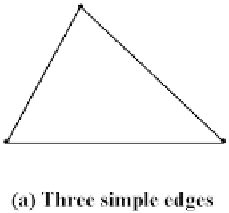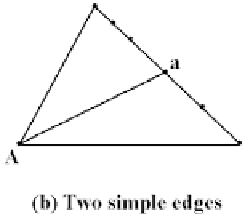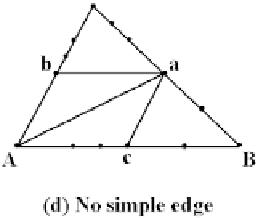Graphics Reference
In-Depth Information
Figure 14.11.
Subdividing triangles in [VeDG99].
we get two, three, or four subtriangles for the subdivision. There are several possible
choices in the cases corresponding to Figure 14.11(c) and (d). A local optimization
criterion is used to make a decision here. The choice will influence the quality of the
final mesh and so it is worthwhile having a good criterion. The entire triangle subdi-
vision process is again a recursive one.
Only Step 1 requires global knowledge about the surface. All the other
steps use only local information. One advantage with this approach is that one gets a
multi-resolution progressive structure. The authors mention applications to tolerance
analysis, multi-resolution editing, level-of-detail rendering and compression, and
progressive transmission and display. (
Progressive transmission
refers to being able to
see better and better approximations of an object as it is incrementally received. See
[Hopp96]).
We conclude this section with a brief mention of a closely related topic of research,
namely, that of curve and surface simplification. Because models are being created
with more and more detail, there are times when it is important to simplify them in
order to save storage space, to save time in transmitting them from one place to
another, or to speed up computations (the level of detail of a far away object does not
have to be as high as one close up). Two good surveys of this subject can be found in
[HecG97] and [Lueb01].
A general object simplification problem:
Given an object with n vertices, find an approx-
imating polygonized object with m vertices. An additional condition might be some error
tolerance condition.
The simplification problem has two aspects: refinement and decimation.
Deci-
mation
is the obvious interpretation of the problem. It is a “bottom-up” process where





